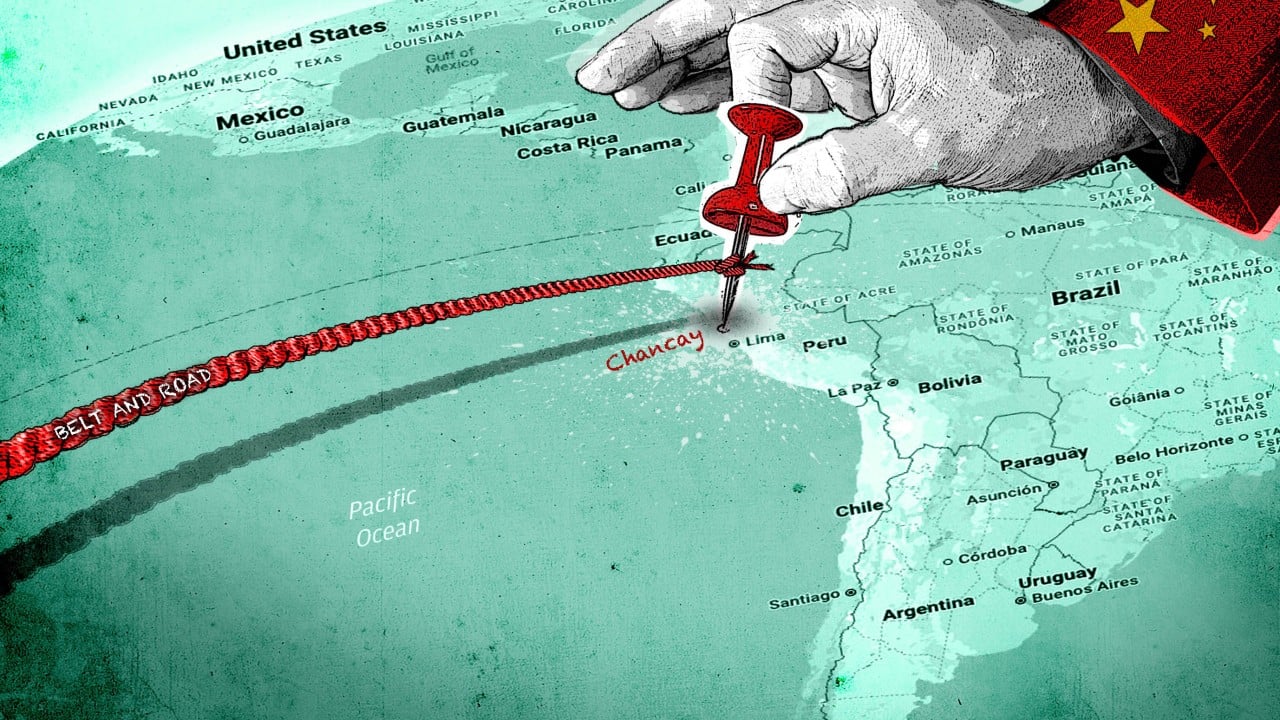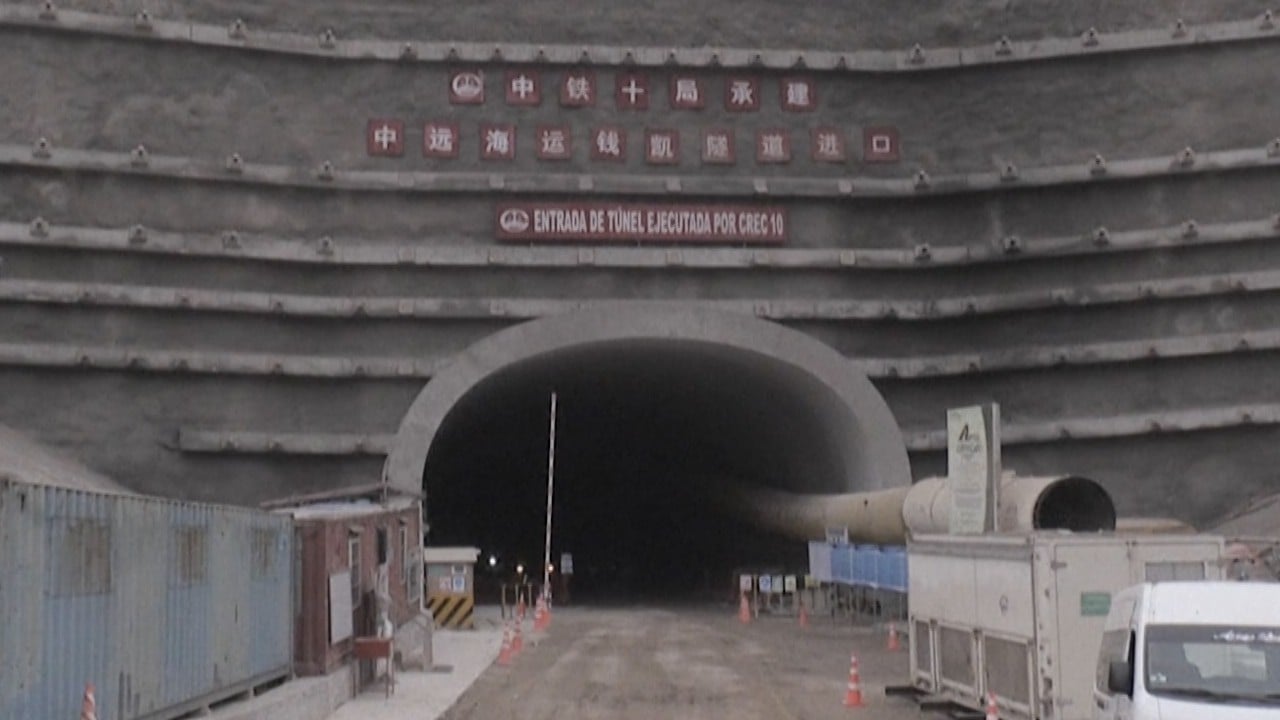President Xi Jinping is expected to inaugurate Chancay port when he visits Peru next week. The Chinese-funded megaport may reshape Pacific trade, but has also made the United States uneasy. In the first of a two-part series, Igor Patrick looks at the history of the project, its impact on global trade and the social costs incurred.
Advertisement
Drive about 70 kilometres (43 miles) along the Pan-American Highway north of Lima, Peru, and you’ll notice a sudden change in the landscape.
Barren mountains and isolated communities give way to a busy avenue where several pylons are adorned with billboards. On many of them is the same advert: “Land for sale, just a few steps from the megaport”. It’s the sign that you have arrived in Chancay.
Five years ago, the roadside placard in this small city of 60,000 might not have made sense, but now, when one of the largest China-backed infrastructure projects in Peru’s history is to be soon inaugurated, these signs are everywhere – together with expectations for the economy and concerns about the environment, land expropriation and lack of infrastructure for a population that could double or triple in the next decade.
Chancay was founded in 1562 by Spanish colonisers on the shores of the Pacific and takes its name from a civilisation that inhabited the region before the Incas. For centuries, the desert climate with its fertile valleys irrigated by rivers meant that the local economy was based on subsistence farming and fishing.
Advertisement
Then, in 2019, the giant Chinese state-owned company Cosco began construction of what is expected to become the largest deep water port in South America.


